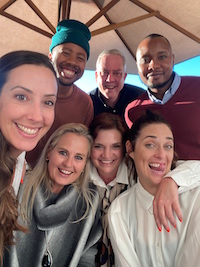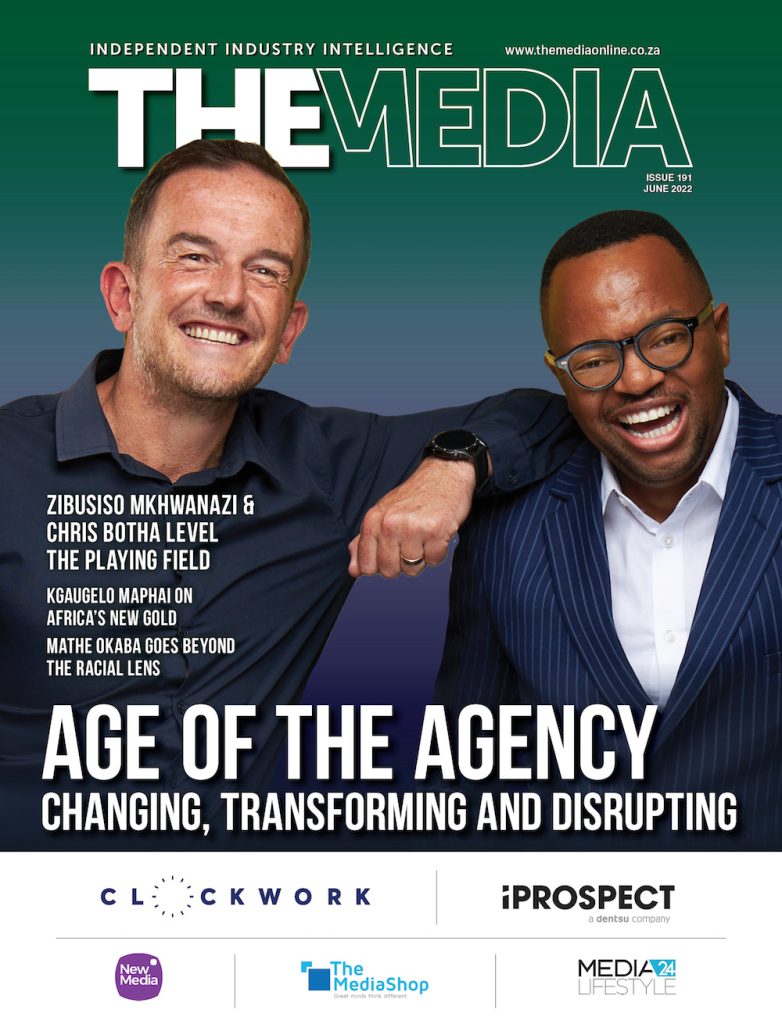Heidi Brauer, Hollard’s chief marketing officer, says that it takes a village to raise a brand. The question is, what happens when an earthquake strikes and irrevocably changes not only the village, but also the very landscape that surrounds it? Joanna Mondon and Warwick Bloom get to grips with the changing nature of client/agency relationships.
While there is much about Covid-19’s long-term effect on business and marketing that has yet to emerge, it is already clear that the ways in which we work, network, collaborate and deliver have changed forever. And this has important implications for client-agency relationships and the way in which we’ll have to adapt as we go about the task of building and maintaining brands together.

We experienced some of this need to adapt first-hand recently when we filmed our Hollard Big Ads for Small Business commercials. Most Covid-19 restrictions were still in place and, in stark contrast to the days of enthusiastic on-set participation by clients/brand, only the smallest viable production team was allowed on set, with everyone else dialled-in virtually.
Rather than via live briefings, live casting, in-person wardrobe processes and direct conversations, feedback happened via various WhatsApp channels as dialled-in client representatives watched happenings via their laptops at home. Matters were further complicated by the fact that the reliability of internet connections varied throughout the day, depending on the location of the particular set.
The exercise was exceptionally challenging, but our strong agency relationship enabled us to adapt and eventually collaborate almost seamlessly in this strange new environment. We may even have become proficient in approving casting, advising on wardrobe and applying live edits remotely. Additionally, remote viewing of the filming process also provided a customer’s-eye view of the commercials, which is not always the focus on a live set.
We’re now required to move from the work-from-home model forced upon us (or enabled for us?) by the pandemic, to a hybrid model of sometimes-work-from-home and sometimes-work-from-the office (or, in some cases, a return to pre-2020 office arrangements). As we do so, we need to recognise that change is hard, and big change is even harder, and we’re dealing with change at a global, societal level. There will be trauma.
Consumers have changed, the way in which we work has changed, and the place of the office in our lives has changed.
What has not changed (and we would argue is unlikely to change) is the need for brands and agencies to forge trusting relationships that include learning from failure and celebrating successes together, to embrace a common and well-articulated set of values and, above all, to connect deeply with a genuine brand purpose. This is especially true when working with multiple agencies across marketing disciplines.
If we’re going to raise a brand together, we’d best all believe the same things and share a common vision of the future. Everyone who touches the brand in any way must take responsibility for their actions and take accountability for the way the brand is perceived.
Of course, you can’t ask people to be held accountable for things they don’t understand. Brands can’t expect agencies to “get” a brand based only on what they’ve seen or heard. And working effectively with multiple agencies across various marketing disciplines (as we do) requires all agency partners to effectively have the same view of the brand. But it’s even more powerful when that view corresponds directly with the in-house view and it becomes irrelevant where resources are actually employed.
Brand immersion
We’ve found a few useful ways to ensure that agency and in-house resources operate from a common foundation and have the same passion for the brand, no matter the number or type of agencies involved. We start with our organisational purpose.
Our purpose not only describes why Hollard exists, but also serves as the guide rail for everything we do on a day-to-day basis. It informs how we engage our agency partners, how we treat our customers, and what we set out to achieve through our communications and campaigns. We work with agencies who share a similar ideal, who embrace our way of operating and who are willing to play a role in realising our purpose. It’s a deal-breaker if you don’t buy in. And it’s a success-clincher when you go all in.

At the Hollard Sport Industry Awards in 2020 celebrating with the Hollard agency Creative Space Media and Hollard team
We also use deliberately loaded language. The terms ‘brand mama’ and ‘brand papa’ describe anyone working with the Hollard brand, be they Hollardites or agency employees. These labels convey the level of care we expect everyone to bring to bear in the raising of our brand. Just as in the case of a real-life parent, fulfilling these roles requires an in-depth understanding of both the potential and the limitations of the brand, as well as its history and dreams.
That’s why everyone who works or is likely to work on the brand – designers, account managers, copywriters, cinematographers, community managers, event planners – is expected to attend an intensive brand immersion hosted by senior Hollardite marketers. The immersion covers the actual business of the organisation (history, status, prospects, culture and purpose), the journey of the brand through time in the eye of the consumer, and detailed guidelines relating to the practical use of the brand identity.
Complementing this process, our ‘brand recipe’ booklet acts as a simple summary of the brand identity. From purpose to positioning, from targeted audiences to targeted brand attributes and from brand outlook to pragmatic brand application, this take-home document provides all villagers with a quick and handy guide to seamless execution of any brand communication.
We know that relationships, just like marketing campaigns, work best when they’re 360˚. So, when we get together to talk business, we also always make space for socialising and the human side. From a simple cameras-on approach to online meetings enriched by deliberate, genuine check-ins, to time set aside for “not work” at physical gatherings, we seek to unlock the power that comes with people knowing they are valued not just for the work skills they bring, but for who they are.
Finally, just like any village worth its salt, we make sure we reflect on completed projects and celebrate our victories. Modifying an approach used by the US Army, we conduct “after-action reviews” following major initiatives, creating a disciplined and psychologically safe space for identifying potential future improvements. And then we take time to celebrate successes, big or small. While a celebratory WhatsApp suffices for small victories, it’s not uncommon for the tequila to flow at the more elaborate celebrations reserved for big wins.
In considering the potential application of these tools and approaches in your own environment, it’s important to acknowledge that there is no foolproof way to guarantee brand cohesion in an increasingly volatile and division-ridden world. There will be mix-ups and wrong decisions. There will be changes of direction. There may even be disasters. But if there truly is a village, and the people of that village are genuine brand mamas and brand papas, then any obstacle can be overcome and a better future must surely be guaranteed for your brand.
Joanna Mondon, AKA Jo, is head of marketing for Hollard Group, responsible for their 360˚ group brand campaigns, coordinating the full marketing mix across digital and traditional channels and ensuring that they’re proactive, and that their comms are on-brand and on time. Mondon works with VMLY&R, Creative Space Media, M&C Saatchi Connect Media and Flow Communications.
Warwick Bloom is head of PR and internal marketing at the Hollard Group. Having started there in 1996 and originally trained in Actuarial Science, his experience spans various operational and management roles. Bloom works with multiple PR and Events agencies, including Flow Communications, Aprio Credence, Tribeca Communications, Toni Elephant Media and Creative Directions and Creative Space Media.















